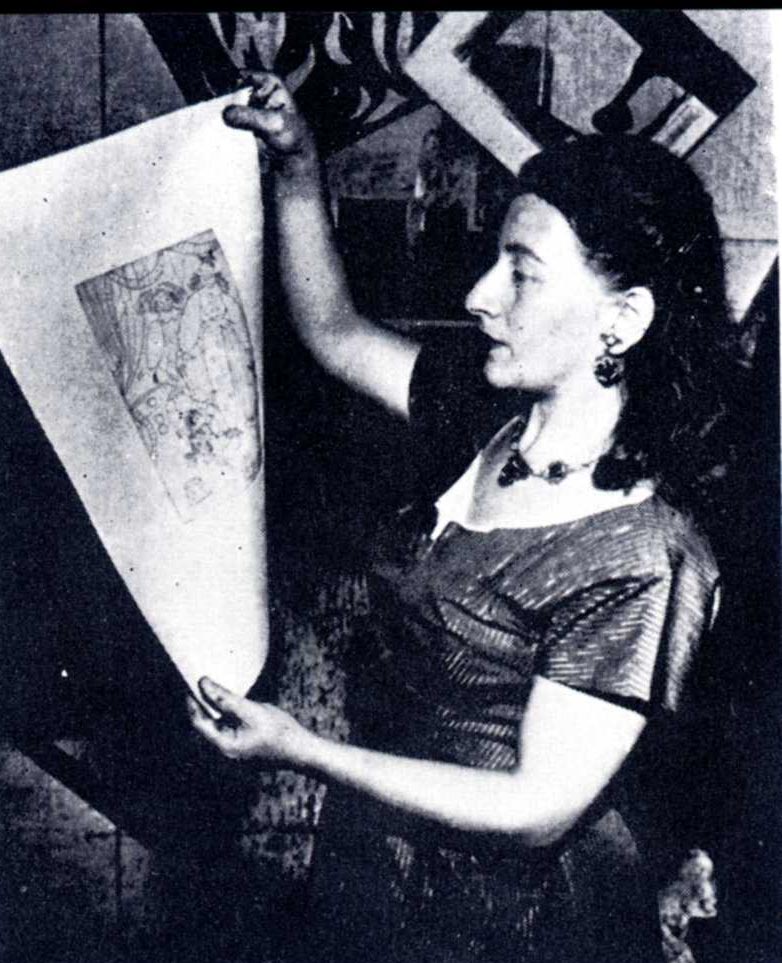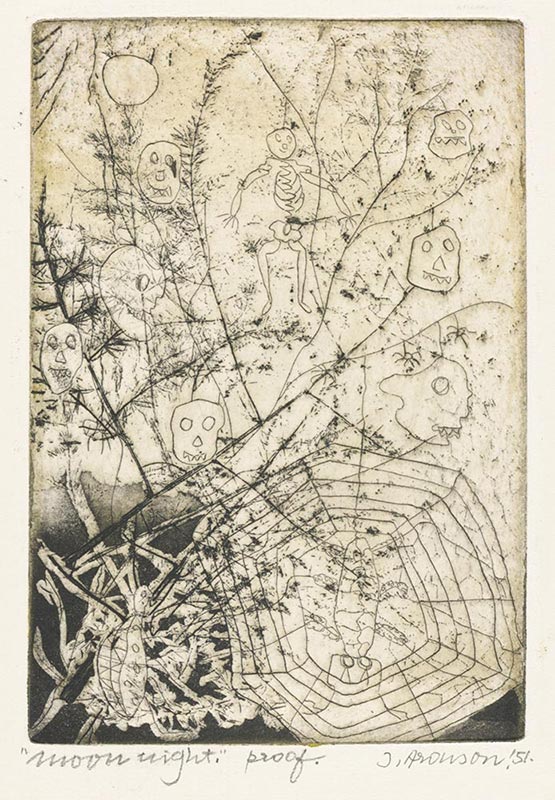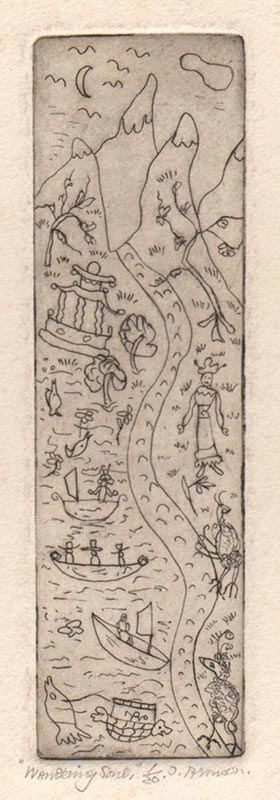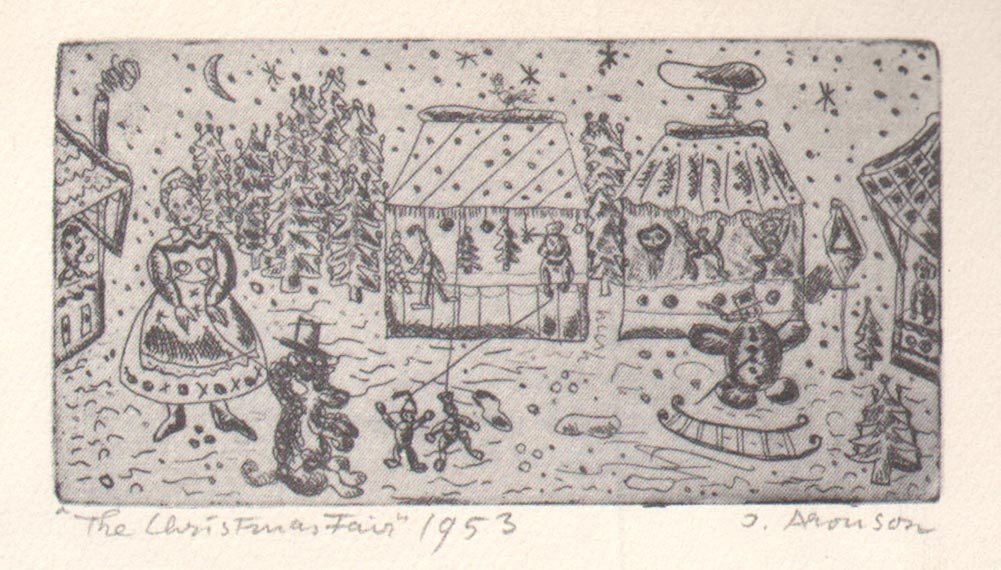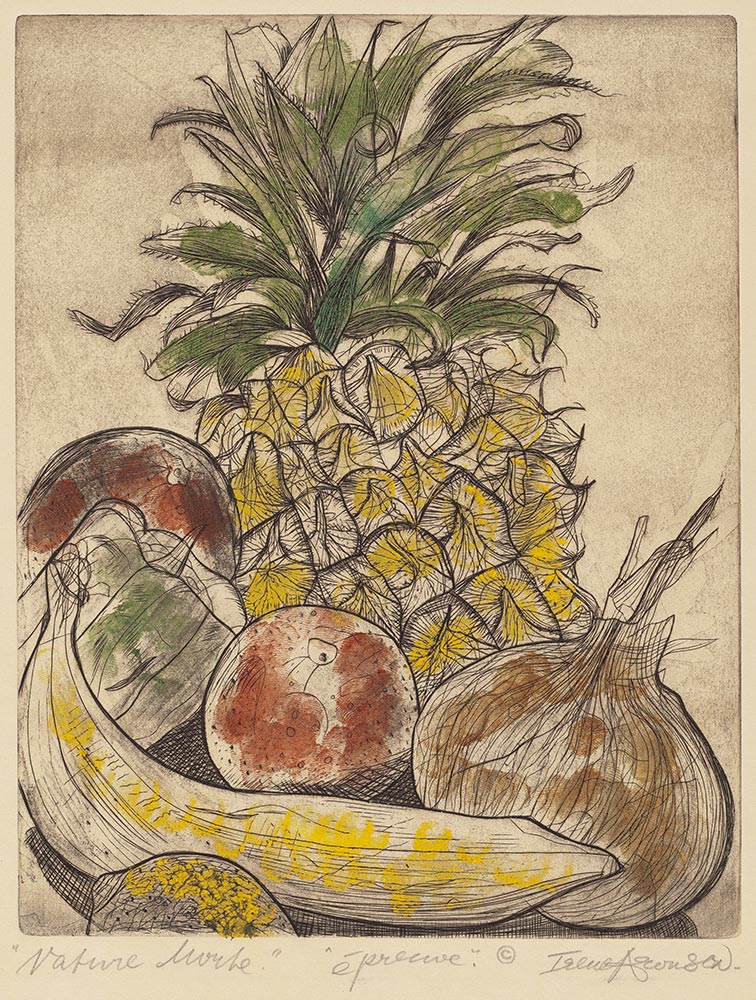2. Irene Aronson
| Life Dates | 1918-1992 |
| Place of Birth | Dresden, Germany |
| Place of Death | unknown |
| Birth Name | Irene Aronson |
Born in Dresden, Irene Aronson and her family fled to London in 1933 to escape Nazi persecution.1 She began art studies at the Eastbourne School of Arts and Crafts (1935–37) and following that, simultaneous enrollment at the Slade School of Arts and Crafts and Ruskin School of Drawing (1937–40). In August 1940 her family immigrated to the United States by way of Ecuador. Newly arrived in New York in March 1941, she pursued short instruction with George Grosz at the Art Students League. As a young child in Dresden, Aronson had been fascinated by opera and, not being able to sing herself, she became a stage designer, which was her primary occupation.2 In addition to teaching stage design and costuming at institutions such as City College of New York, Aronson created the costumes for the Barnum and Bailey Circus and the Broadway performance of Front Page. Joining Atelier 17 sometime in the early 1950s allowed Aronson to combine her interest in the visual arts with her passion for stage performance. Most of her intaglio prints have a theatrical or musical quality, such as her major portfolios, Danse Macabre (1951) and The Circus (1952), which earned her a solo show at the Weyhe Gallery in 1952. Aronson indicated that the former portfolio, from which the print Moon Night is a part, made reference to the nightmares and death she witnessed as a Jew in Nazi Germany.3 Critics praised the simplicity of her etchings, comparing them to children’s drawings and citing the influence of Paul Klee. Dore Ashton, for example, felt that the linear directness of her prints was “refreshing, in these times of extensive technological research in graphic art.”4 After her affiliation with Atelier 17, Aronson remained active in the printmaking community: she mastered woodcut and color lithography, wrote how-to articles about printmaking techniques, and exhibited her work at cooperative spaces such as Tanager Gallery.
Archives
Department of Painting and Sculpture: Artists Records [I.9], Museum of Modern Art Archives, New York.
William S. Lieberman Papers, Artist Correspondence [II.B.2], Museum of Modern Art Archives, New York.
Special Exhibition Files, Graphic Arts Division, National Museum of American History, Washington, DC.
Selected Bibliography
Aronson, Irene. “Moonnight.” Our Town 3, no. 1 (October 1961): cover.
———. “The Print Maker: An Introduction to the Technique of Etching.” Design 56, no. 4 (1955): 149–51.
———. “The Technique of the Color Lithograph.” American Artist 27, no. 8 (October 1963): 30.
Ashton, Dore. “Irene Aronson.” Art Digest 26 (September 1952): 17, 22.
Exhibition of Two Portfolios by Irene Aronson. New York: Weyhe Gallery, 1952.
Exposición de La Grabadora Norteameicano Irene Aronson. Mexico City: Museo Nacional de Arte Moderno, Instituto Nacional de Bellas Artes, 1959.
Haas, Irvin. “New Portfolios.” Art News 50, no. 5 (September 1951): 11.
———. “Portfolios.” Art News 53 (June 1954): 15.
———. “Young Primitives.” Art News 49 (May 1950): 13.
Irene Aronson: Drawings, Designs, Illustrations, Sketches Related to the Theatre. New York: New York Public Library (58th Street Branch), 1948.
Moore, Mary Jane. “She Puts Circus Life on Canvas.” Long Island Daily Press, April 17, 1953.
Porter, Franklin. “Six Newcomers.” Art News 50 (January 1952): 45.
Raidy, William. “Bread More Than Berets Is Concern of an Artist.” Long Island Press, April 16, 1961.
———. “How I Became an Artist…Offstage.” Long Island Daily Press, June 9, 1959.
———. “Painter Captures the Comic and Tragic on Her Sketch Pad.” Long Island Daily Press, September 26, 1952.
Notes
- For biographical information about Aronson, see the National Museum of American History, Graphic Arts Division, Special Exhibition Files. “Aronsohn” appears to have been the original spelling of the artist’s surname, but she used the Anglicized “Aronson” or, later, “Anderson” while living in the United States. ↩
- Aronson exhibited a gouache and ink drawing of a costume design in MoMA’s fifteenth anniversary exhibition, Art in Progress (1944). The poet Holly Beye, married to David Ruff who was active at Atelier 17 in the late 1940s, mentioned Irene (“Fifi”) Aronson’s freelance work her diaries, writing it had taken Aronson “7 years … to realize even a small income from her recent work. She does commissioned book jackets, stage costume design, Christmas cards.” Holly Beye, 120 Charles Street, the Village: Journals & Writings, 1949-1950 (Huron, Ohio: Bottom Dog Press, 2006), 21. ↩
- Mary Jane Moore, “She Puts Circus Life on Canvas,” Long Island Daily Press (April 17, 1953). ↩
- Dore Ashton, “Irene Aronson,” Art Digest 26 (September 1952): 22; Irvin Haas, “Young Primitives,” Art News 49 (May 1950): 13. ↩
